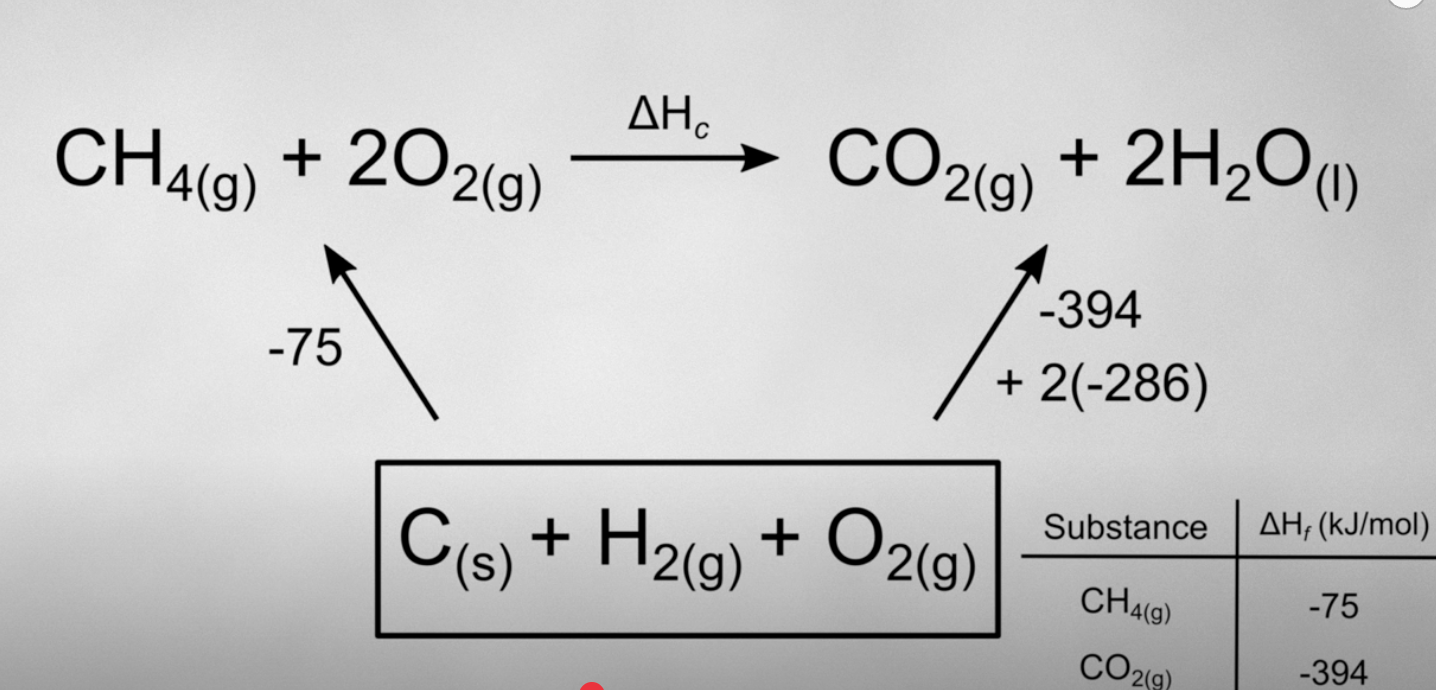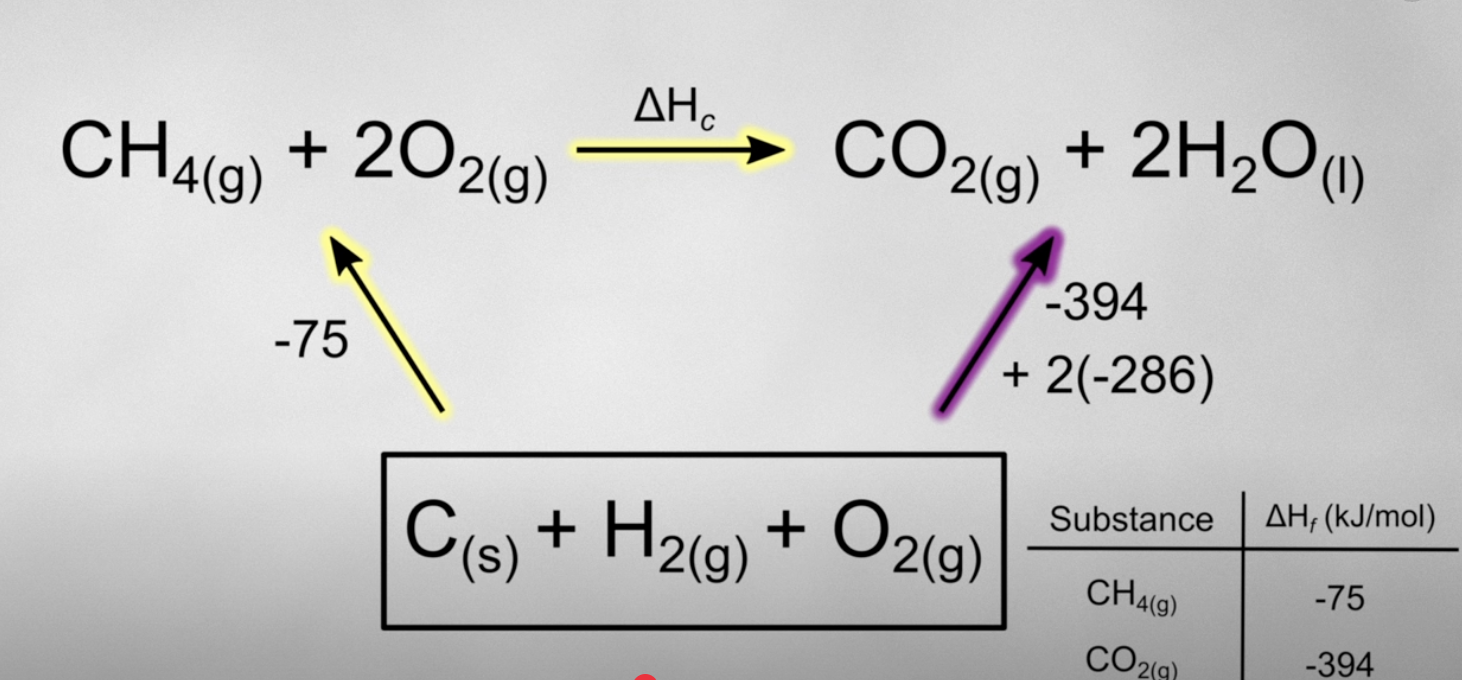IB2/U1: Thermochemistry
1/26
There's no tags or description
Looks like no tags are added yet.
Name | Mastery | Learn | Test | Matching | Spaced |
|---|
No study sessions yet.
27 Terms
heat (Q)
thermal energy:
what is it
what are its properties
the form of energy that is transfered between objects or systems because of a temperature difference
energy within a system that’s created by the random motion of molecules and atoms (KE)
what is thermochem?
energy changes in changes of matter
Heat (Q) vs Thermal energy and temp
thermal energy: the total energy within a system because of the random motion of molecules and atoms: KE+PE. this energy can be transferred, and when it is, its transferred as heat
heat: thermal energy that is transferred between objects or systems of different temp hot—> cool
temp: the average kinetic energy of the particles in a sample of matter
system vs surroundings
types of systems:
open
closed
isolated
system: the actual reaction itself, the substances undergoing the change
surroundings: the environment around the system
types of systems: affects exchange between the system and the surroundings
open: exchange energy and matter
closed: exchange energy but not matter
isolated system: cannot exchange matter or energy
enthalpy
enthalpy is the amount of heat energy contained in a substance which is stored in chemical bonds
it cannot be measured directly → we can only measure the change in enthalpy
the enthalpy of a substance is from its particles kinetic and potential energy
what is an enthalpy change
it is the amount of heat energy released or taken in per mole of substance during a physical or chemical change
examples of enthalpy change:
enthalpy change of formation ∆Hf
enthalpy change of combustion ∆Hc
bond enthalpy
the change in energy when 1 mole of a compound is formed from its elements in their standard states
the change in energy when 1 mole of a substance is burnt completely in O2
bond enthalpy is the change in energy when one mole of gaseous covalent bonds is broken (energy change of bond breaking/reforming)
bond reform = -bond break (bond break >0 always)
what is Hess’s Law
the enthalpy change during a chemical change is independant of the intermediate steps taken (state function)
as long as you have the same reactants and end at the same products, the enthalpy change is the same
RP = RI + RP

using Hess’s law, how can you find the enthalpy of combustion ∆Hc without changing the directions of the arrows?

recall that Hess’s law states that intermediate steps dont matter as long as you have the same reactants and products so instead of switching the signs, just switch the path way, starting with the elements of formation as the reactants.

how would you solve for the enthalpy of formation if you were only given the enthalpy of combustion for C, H2 and C6H6?
*we always set up the hess cycle using whatever enthalpies we’ve been given as our intermediate step
enthalpy of vaporization
why is this important for bond energies?
the energy change when one mole of a liquid is boiled to form a gas
this is important because if we are given a substance in liquid form, we not only need to find the bond energies for the substance but also add the enthalpy of vaporization to account for the energy needed to overcome IMFs to get to a gas state
potential energy of particles
the potential energy of particles comes from the intermolecular forces between the partciles because of their reltive position to each other
kinetic energy of particles
partciles have KE because of their movement
Enthalpy: unit and symbol
It is measured in KJ/mol
The symbol for enthalpy is ΔH
what conditions are needed to measure the enthalpy change?
compounds need to be in their standard states and under standard conditions: 298K, 101KPA, 1 mol/dm3 solution
system vs surrounding
the system is the reaction mixture while the surrounding is everything around it
standard enthalpy change of a reaction
enthalpy change when molar quantities of reactants in their standard states react to form products in their standard states states under standard conditions
calorimetry
calorimeter
the process of measuring energy changes during a phyiscal or chemical process
calorimeter: is an insulated reaction vessel where the change in temperature of the surroundings can be measured
specific heat capacity ( c)
specific heat capacity of water
it is the amount of heat needed to raise 1g of a substance by 1 K
water has a very high specific heat capacity! it needs a lot of energy to change its temperature! c = 4.184 J/gK
calorimetry assumptions + limitations
we assume no heat is being transferred between the calorimeter and the outside environment (making it an isolated system) but the system is rarely isolated, it may be closed though
we assume that the heat absorbed or released by the calorimeter is negligible → not true because sometimes we account for the heat absorbed by the calorimeter in calculations
we assume a dilute aqueous solution has a density and c equal to water (obvs not true) → d= 1g/cm3 c=4.184 J/gK
errors in calorimetry to mention
heat loss to atmosphere
heat absorbed by calorimeter
incomplete combustion: because its less efficient and releases less heat
not actually reacting at SATP (standard conditions)
enthalpy (H)
enthalpy change (∆H)
if heat is the transfer of thermal energy from warmer to colder substances, than enthalpy is the total thermal energy in a subtance. but we do not have a way of measuring this directly!
enthalpy change is the flow of thermal energy into or out of the system per mol
equations of enthalpy change
∆H = H(products) - H(reactants)
∆H = -Q/n
∆H = n∆Hx
molar enthalpy ∆Hx
x = subscript for the type of change (ie. comb, vap, neut)
this is the enthalpy change for 1 mol of a substance so the units are J/mol
this is different from the standard enthalpy of combustion. to calculate this, you will be calculating an enthalpy change for some amount of substance other than 1 mol using:
∆H = n∆Hx → you can use mol ratios to manipulate the molar enthalpy to help get other values
enthalpy change of neutralization ∆Hn
this is the energy change when 1 mol of water is formed from the reaction of an acid with a base under standard conditions
so the units are: KJ/mol H2O